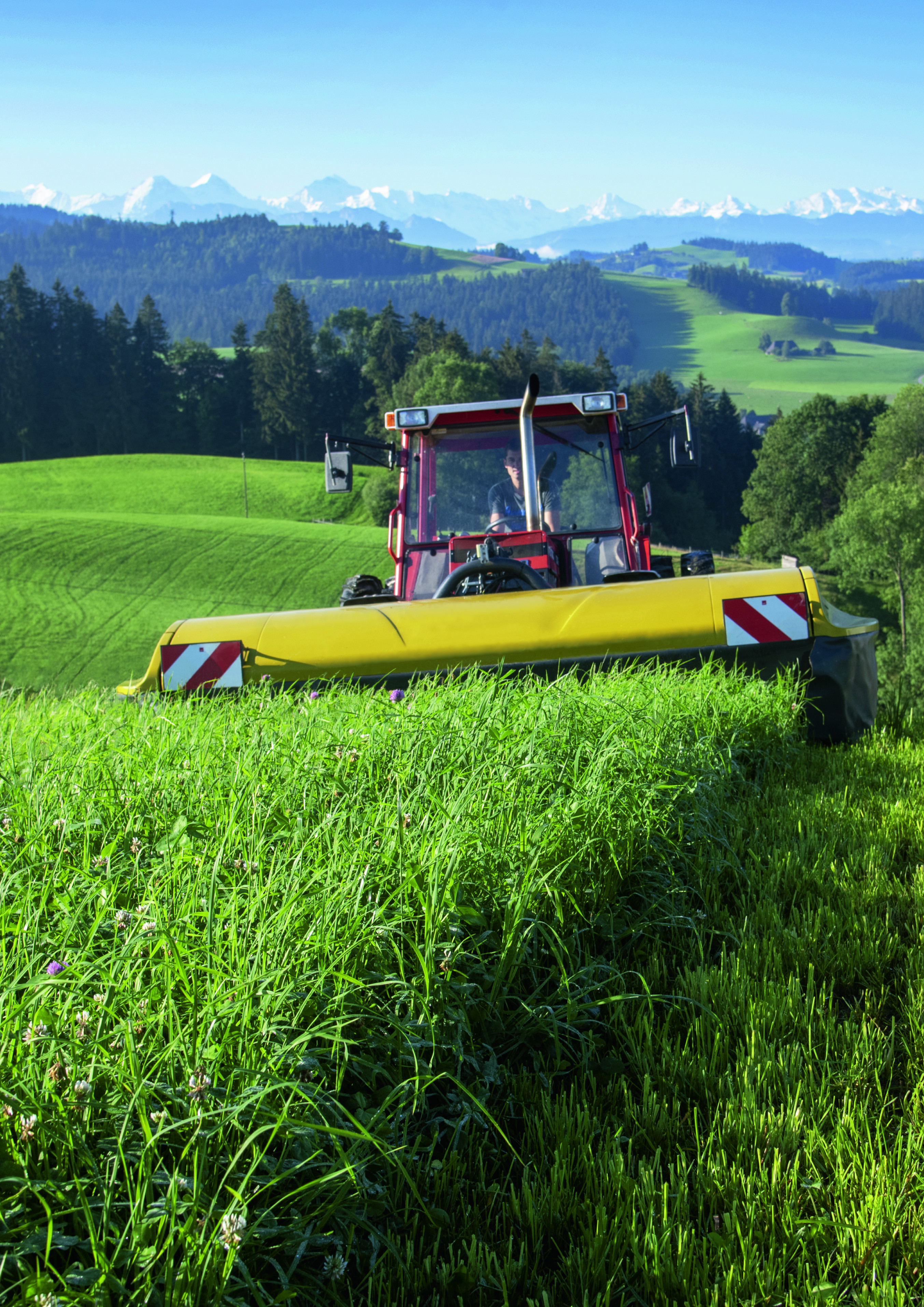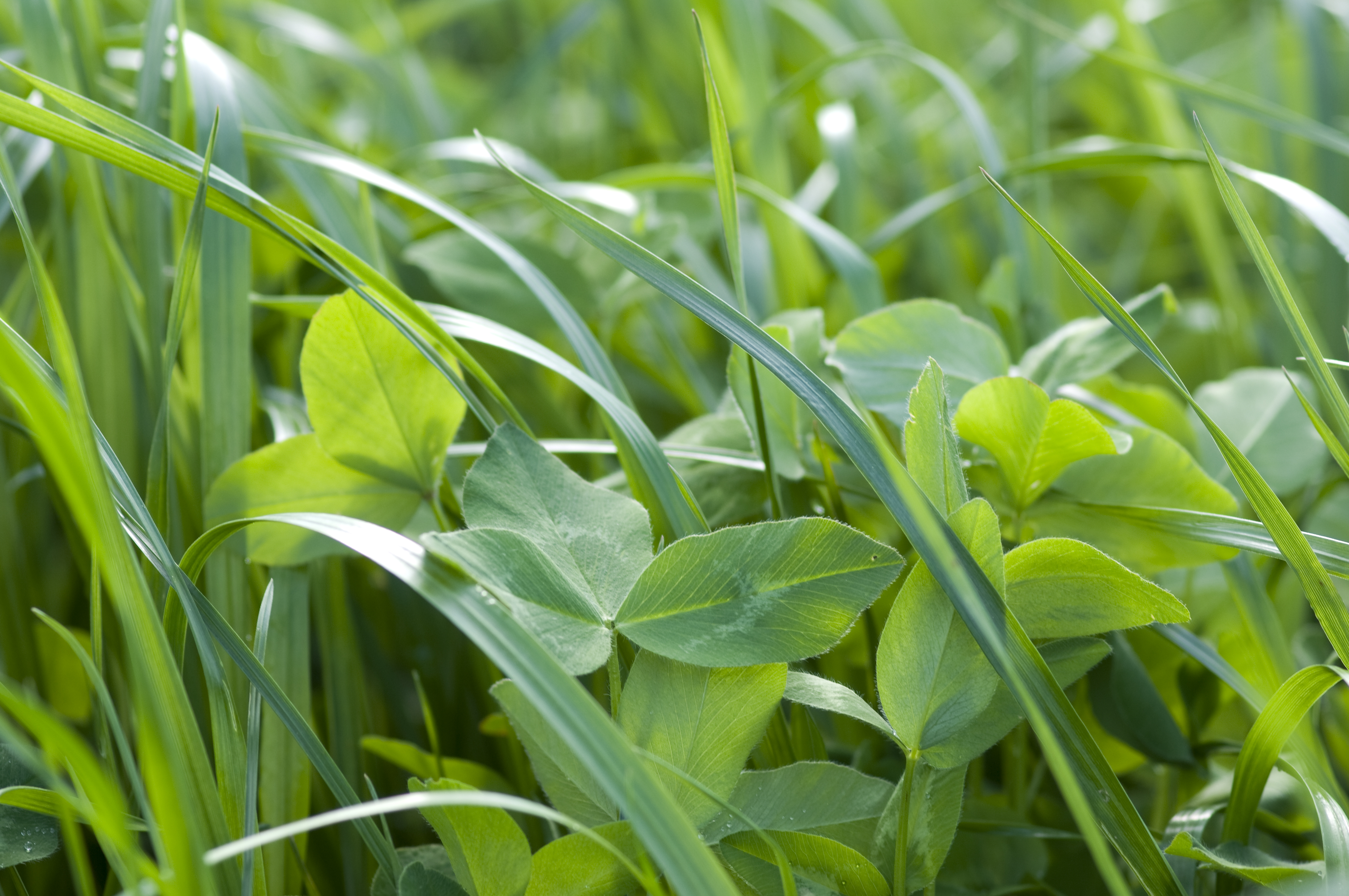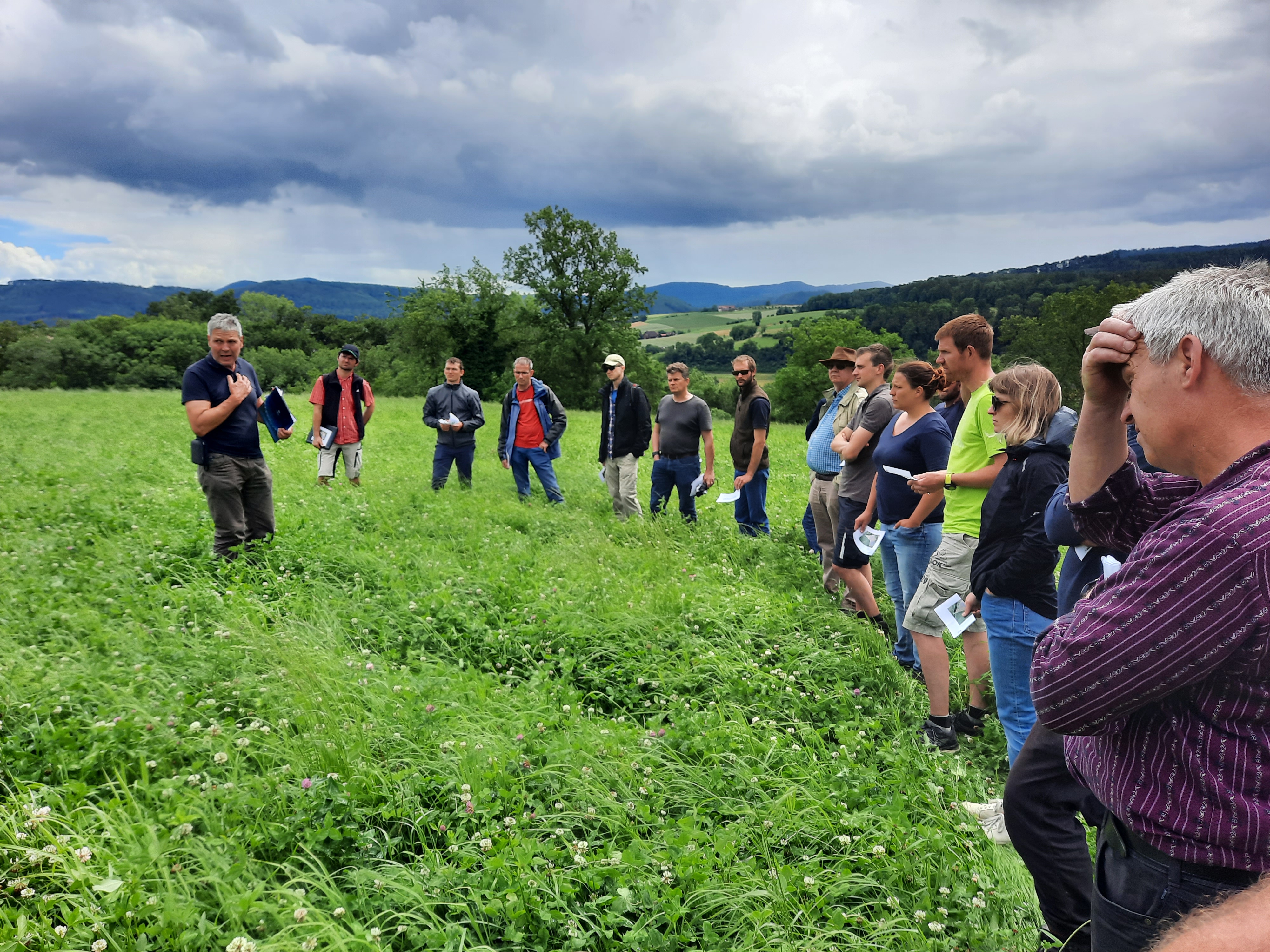By Andreas Lüscher
Multi-species grassland mixtures represent a sustainable, agroecological solution that can deliver multiple ecosystem services.
Productive grasslands have relied strongly on low plant diversity (often monocultures) with high management intensity and fertiliser input. Meanwhile, multi-species grassland mixtures offer a practical, farm-scale option to provide grassland forage with low inputs and environmental impacts without compromising forage yield or quality. They can also provide many other farming benefits.

Harvest of forage from a multi-species temporal grassland. (© Agroscope, G. Brändle)
Multi-species grassland mixtures provide a wide range of benefits
Numerous studies have shown that increasing plant diversity in productive grasslands under high management intensity promotes a wide range of desired ecosystem functions, such as:
- high forage yield and quantity
- higher nutrient use efficiency
- yield stability
- weed suppression
- resistance to and recovery from extreme weather events
- lower greenhouse gas emissions
- soil fertility and biodiversity
One prominent agroecological solution associated with designed multi-species mixtures is the displacement of mineral nitrogen fertiliser by symbiotically fixed nitrogen from the air and its associated environmental benefits.

Positive interactions among clover and grasses. Grasses profit from the clover’s symbiotic fixation of nitrogen from the air. As a result, the input of inorganic nitrogen fertiliser can strongly be reduced. (© Agroscope, G. Brändle)
Looking closely to understand more about plant species richness, identities and relative proportions
When assessing the diversity and ecosystem functioning relationship, species diversity is often equated to species richness alone. However, the identities and the relative proportions of plant species are two other, fundamental design features of multi-species mixtures, strongly affecting their performance. Consequently, recommendations on these three properties must be strongly evidence based. This can best be done with diversity-interactions models using a multiple regression framework to separately quantify the effects of species’ identity, species’ proportions and species’ interactions on an ecosystem service. The statistical and graphical approach is supported by the DImodels R package. In our full paper, first published in the Journal of Ecology in April 2024, illustrative examples are shown.
Modest number of forage species can have a big effect
A key insight from our work is that a modest number of forage species (four to eight) can optimise yield and other benefits. The addition of many more species (e.g. mixtures with 20 to 40 species) is not necessarily better.
Using a high number of species in a mixture risks diluting the contribution of a smaller set of high-performing species. What is more important than high numbers of species is the careful design and selection of the type and number of species and their relative proportions. In general, the inclusion of four to eight carefully selected species seems to optimise multiple benefits from mixtures for farming.
Grasslands are complex systems, and modern agriculture wants more than just high yields. Additional desirable responses include forage quality, weed suppression, nutrient use efficiency, drought resistance, low greenhouse gas emissions. Note that the benefits of diversity in multi-species mixtures are likely to be higher when we consider multiple responses, as opposed to a consideration of forage yield only.

Strategic design of multi-species mixtures to optimise delivery of forage yield and multiple other ecosystem services. (© Teagasc, G. Grange)
Practical lessons for the design of multi-species mixtures
We identify several keys to success in the design of multi-species mixtures:
- Choose the best-performing species (for the response of interest) based on their performance in monoculture.
- Choose the species that maximise synergistic interactions for the response of interest. Positive mixing effects can increase the mixture responses; if sufficiently positive, they will out-perform the best monoculture.
- Choose species that are able to persist at reasonable proportions that maintain a balance of proportions among the species. No matter how high-performing and synergistically interactive a species is, it will not contribute much with a relative abundance of 1%.
- Simply advising 'more species is better' is not necessarily correct. Species' identity and relative abundance strongly affect the response. See our example in the paper (scatterplot) how these diversity aspects determine which community is best.

Exchange on multi-species mixtures among researchers, farmers and extensionists. (© AGFF, O. Huguenin-Elie)
Find out more
Design principles for multi-species productive grasslands: Quantifying effects of diversity beyond richness, published in Journal of Ecology, April 2024
(Authors John A. Finn, Matthias Suter, Rishabh Vishwakarma, Natalie J. Oram, Andreas Lüscher, Caroline Brophy)
Webinar (on YouTube): From research to practice: multi-species mixtures a pillar of agroecology
Innovation Hub: Certified, diverse temporary grassland mixtures - Switzerland




